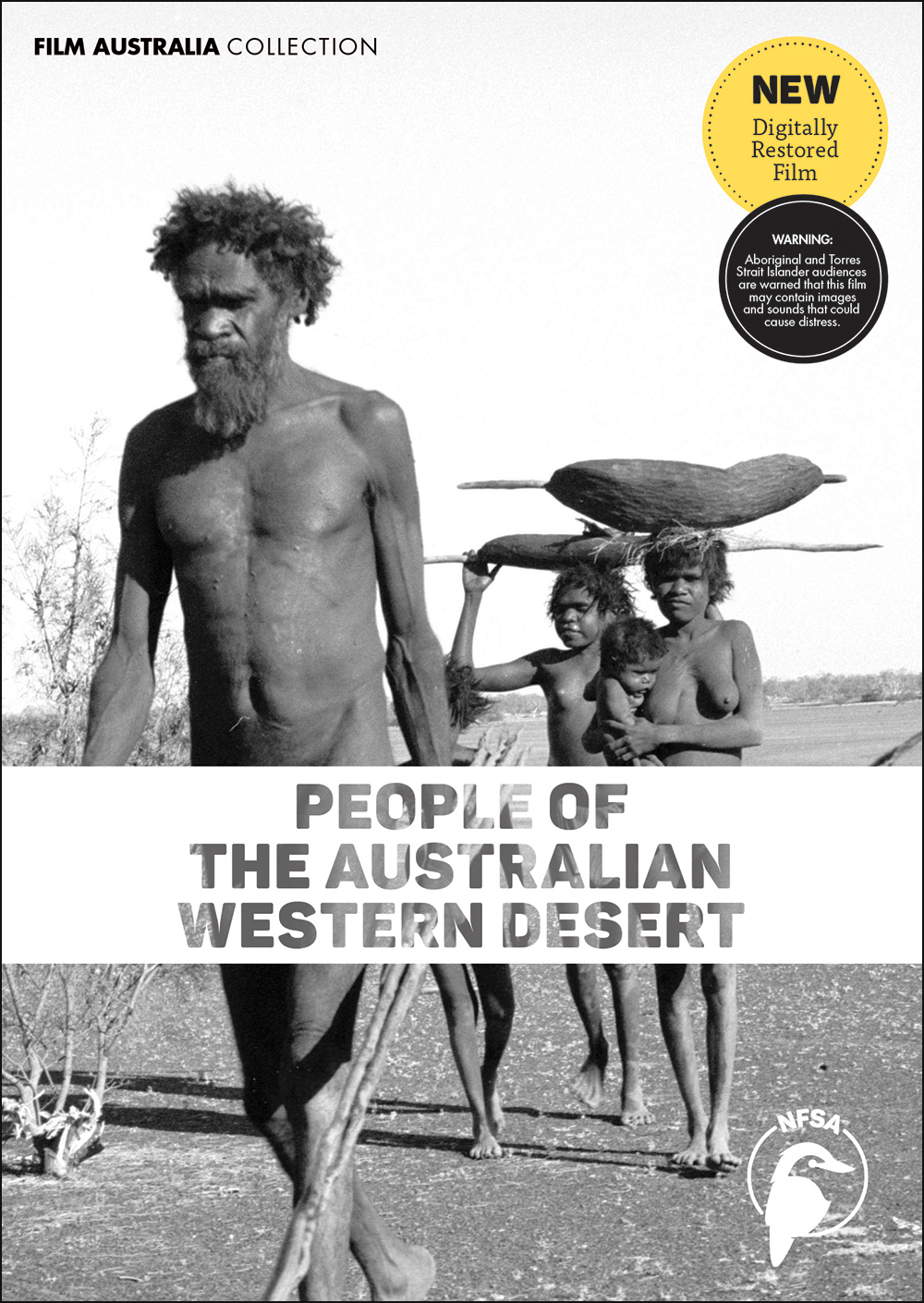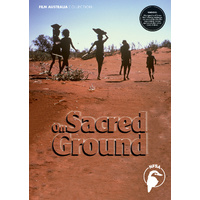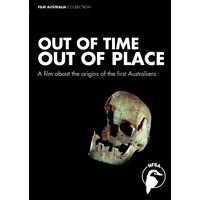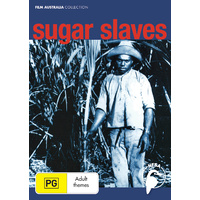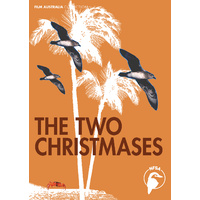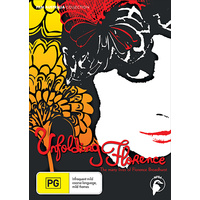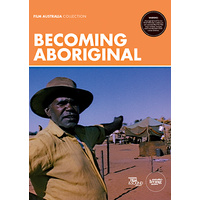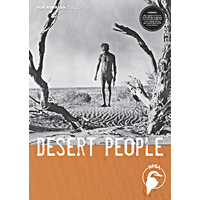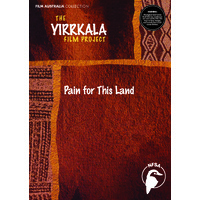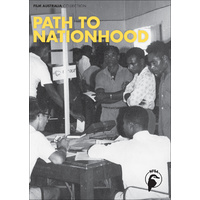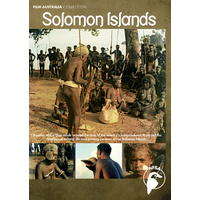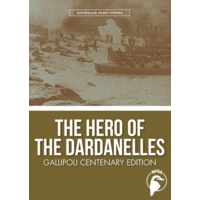1967, Total Running Time 314 Minutes (16 Episodes)
In 1965 and 1967, the Australian Institute of Aboriginal Studies sponsored film trips by the then Commonwealth Film Unit to the Western Desert region of Australia. The object of these trips was to film the daily life of nomadic Aboriginal people living in the Gibson Desert of Central Australia. Although this land is one of the most arid regions of Australia, the people who lived there regarded it as rich in resources.
EPISODES
Part 1 Seed Cake Making and General Camp Activity (20 Minutes) A general introduction to the series. Filmed in the Clutterbuck Hills area of Western Australia, it looks at the daily life of a nomadic Aboriginal family and shows the women of the family gathering grass seed and preparing seed cake.
Part 2 Gum Preparation - Stone Flaking - Djagamara Leaves Badjar (18 Minutes) The daily life and technology of the nomadic Aboriginal people of the Western Desert. In this footage, a man prepares gum from spinifex, which is used as general-purpose cement; strikes stone flakes for tools; and is seen leaving his camp at Badjar.
Part 4 A Family Moves Camp and Gathers Food (46 Minutes) A nomadic family of the Western Desert moves from Yalara camp to Tika Tika camp, a day’s walk away. On the way they gather fruit, grass seed, lizards and a rabbit-eared bandicoot. After making camp and getting water from a deep well, they cook some of the food. This is an edited sequence shot over several days. The family consisted of a man, two wives and four children. They were, in fact, living at Warburton Mission at this time and were taken out to their own country by the film unit to do the filming.
Part 5 Old Camp Sites at Tika Tika - Mending a Cracked Dish - Quandong Medical (11 Minutes) Three separate sequences feature an old deserted camp site in the Western Desert; a woman mending a cracked dish with spinifex gum; and quandong fruit being prepared by a woman as a headache cure.
Part 6 Spear Making - Boys’ Spear Fight (9 Minutes) There are two separate sequences. The first features a man of the Western Desert demonstrating spear making using a mulga tree for the shaft and shaping it with a metal axe. The second shows his sons playing with toy spears.
Part 7 Spear-Thrower Making Including Stone Flaking and Gum Preparation (32 Minutes) A man of the Western Desert makes a spear-thrower or woomera. He cuts the wood from a mulga tree and shapes it with a metal axe. He then prepares spinifex gum, flakes a stone blade, and sticks the stone (for use as a knife and scraper) to the spear-thrower handle with the gum. He binds a barb to the other end of the spear-thrower with kangaroo leg sinew.
Part 8 Fire Making (7 Minutes) Two boys of the Western Desert make fire. They gather dry kangaroo dung, crumble it and put it in a cup of dry grass which they stuff into a crack in a dead log of wood. They rub a spear-thrower across the log and the friction ignites the kangaroo dung.
Part 9 Spinning Hair String - Getting Water from a Well - Binding Girl’s Hair (12 Minutes) Three separate sequences feature a woman of the Western Desert spinning hair string, a girl getting water from a deep well at Tika Tika with her wooden dish, and the girl’s hair being bound with hair string.
Part 10 Cooking Kangaroo (16 Minutes) A man of the Western Desert guts a kangaroo using the stone in the handle of his spear thrower. After singeing off the fur in a blazing fire, the kangaroo is cooked in a trench covered with glowing ashes and soil and then the cooked kangaroo is cut up according to custom.
Part 12 At Patantja Clay Pan (53 Minutes) This film covers two days in the lives of three families of the Western Desert camped together by a large clay pan during a period of relative bounty. Good rain had fallen some months ago, the clay pan is largely covered with water, and game and other food are relatively plentiful. Men hunt emus from behind a hide. An emu is speared; later, we see an emu cooked and eaten. Women collect and grind mulga seed, collect grubs from the trunk of a gum tree and cook them, and collect the fruit of “bush tomato” which they eat raw. It is early summer and the daily temperature is often well above 40 degrees celsius. During the heat of the day everyone retires to the shade of their branch shelters to rest.
Part 13 Stone and Gum Working (24 Minutes) A man of the Western Desert collects spinifex gum and prepares it with the help of his wife. He collects stones from a quarry and knaps these to obtain a knife scraper and hand chopper. He uses the spinifex gum to stick the scraper onto the handle of his spear-thrower.
Part 14 Making a Wira (9 Minutes) A man of the Western Desert cuts a section of wood from a tree for making a digging dish or wira. He uses first a stone hand chopper and then a metal axe. Back at camp he shapes the wood into a digging dish.
Part 15 Mamu (8 Minutes) Two men of the Western Desert chase a mamu or evil spirit out of camp. Both men are “mapantjara” - men who have the power to remove powerful bones or stones from their stomachs and use them for medicine and dealing with the spirits. They chase the mamu away by removing bones from their stomachs and hitting these along and into the ground with their spear-throwers.
Part 16 Headache (5 Minutes) A man of the Western Desert who is a “mapantjara” or healer operates on another man who has a headache. He takes powerful bones from his stomach and pushes these into his patient’s head. He then sucks at the back of the patient’s head to draw out the sickness.
Part 18 Quandong Cake (8 Minutes) A woman of the Western Desert nurses her baby; she then grinds the dried skin and flesh of quandong fruit and mixes this with water to make an uncooked cake which is then eaten.
Part 19 Kangaroo Cooking at Kunapural (19 Minutes) A man of the Western Desert cooks a kangaroo and then divides it into its various cuts according to custom, using stone and wooden tools. Using wooden dishes, children get water from a well.
NOTE Parts 3, 11 and 17 are not included. They contain restricted men’s secret-sacred material.
This longform film series is devised as an ethnographic record. For general screenings a condensed version of this series has been made under the title Desert People.
An Australian National Film Board Production. Produced by the Australian Commonwealth Film Unit for the Australian Institute of Aboriginal Studies.
© 2011 National Film and Sound Archive of Australia.
(000182501)
Producer: John Martin-Jones
Director/Writer: Ian Dunlop
Narrator / Presenter: Ian Dunlop
Year: 1967
Total Running Time: 314 Minutes
Classification: Exempt from classification
Curriculum Links: Anthropology and Prehistory; Art and Design; Australian History (of particular relevance for NSW History Stage 4 'Aboriginal and Indigenous Peoples, Colonisation and Contact History 'What can we learn about Aboriginal and Indigenous peoples?'); Cultural Studies, Human Ecology; SOSE/HSIE, Indigenous Studies.
SEE ALSO
| SKU | 000182501 |
| Brand | Film Australia |

